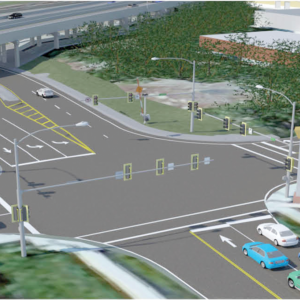By Dan Brooks, Billings Chamber of Commerce
Tomorrow is Legislative Day 71, giving lawmakers 19 more days before legislative business must conclude. And despite having over two weeks left to work, I’d wager they wrap up in April, going Sine Die (concluding the legislative session) without using any days in May. Just a hunch…
Considering the recent holiday, I felt it appropriate to highlight a different rise from the dead. No, I don’t mean to detail our favorite Maiar’s return to the mortal realm of Middle Earth, given new life by Eru Ilúvatar. I want to look at legislative blast motions, the process by which either body, house or senate, can vote to bring a bill to the full floor, giving it renewed life.
During floor sessions, members of the house or senate can make the motion to take a bill that’s been tabled in committee and place it on the floor agenda for a scheduled 2nd reading, allowing a vote by the whole body, and bypassing the previous decision of the committee. Successful blast motions breathe life back into a bill that had been effectively dead, although many of the bills that receive a second chance will still end up dead in the end.
Billings Strategic Partners and supporters of the One Big Sky District project should remember the importance, and disappointment in, the potential of blast motions. After it was tabled in (S) Tax, SB 340, the 406 Impact Districts bill, failed a blast motion by a couple votes on the Senate Floor, the final nail in the coffin for the bill in 2019.
As you can see from the information below, each legislative session is different. Legislators have varying appetites for making blast motions, and the bodies differ on whether they want to entertain them, somewhat undermining previous committee decisions. While the 2017 and 2019 sessions each have over 40 blast motion attempts, the success of the efforts remained limited.
We’ll see how many more blast motions are made this session as legislators make last ditch efforts to save their bills. With lawmakers starting to see the light at the end of the legislative tunnel, it’s unlikely they will want to bring many more bills to the floor.
2023 Legislative Session (thru Apr 7)
Successful blast motions: 4 out of 24
We’ll see how many more blast motions are made this session as legislators make last ditch efforts to save their bills. With lawmakers starting to see the light at the end of the legislative tunnel, it’s unlikely they will want to bring many more bills to the floor.
2023 Legislative Session (thru Apr 7)
Successful blast motions: 4 out of 24
HB 432 – Generally revise abortion laws (Fail)
HB 448 – Revise laws related to right to work (Fail)
HB 515 – Revise property tax payment procedures (Passed)
HB 784 – Revise laws related to school elections (Fail)
HB 837 – Require curriculum transparency in K-12 education (Fail)
HB 953 – Create election security & integrity complaint/enforcement process (Fail)
HJ 5 – Resolution for congressional term limits (Fail)
HJ 13 – Resolution for Article V Convention for a balanced budget amendment (Fail)
SB 15 – Provide for all ages homeowner and renter tax credit (Fail)
SB 110 – Provide property tax assistance to elderly homeowners (Fail)
SB 120 – Establish the Chief Earl Old Person memorial highway (Passed)
SB 141 – Create indigenous people’s day (Fail)
SB 161 – Revise board of investment laws (Failed on both attempts)
SB 194 – Income tax credit for landlords who rent for below market rate (Fail)
SB 233 – Enhance legislative understanding of state-tribal relations (Failed x2)
SB 276 – Revise laws related to prevailing wage (Fail)
SB 361 – Prohibit discrimination by any person/entity because of firearms (Passed)
SB 390 – Provide freedom in school choice (Fail)
SB 437 – Generally revise abortion laws (Fail)
SB 449 – Provide limitations on collections of taxes (Fail)
SB 464 – Revise laws related to eyewitness lineups (Passed)
SB 517 – Establish graduated fee on short term rentals (Fail)
Senate Bill 14 Sen. Greg Hertz (R) SD 6
Revise MEDIA Act film credit cap
Senate Bill 14 raises the cap for the MEDIA Act tax credits from $12 million to $20 million, with 25% of the credits going to a company domiciled in the state. The MEDIA Act was passed in 2019 and then increased in 2021. Incentivizing film production in Montana leads to numerous other benefits, providing manufacturing and trades jobs, increasing tourism, growing local businesses and economies, and diversifying Montana’s mix of industries. This bill passed the senate 30 – 20 and will be heard in (H) Taxation on April 13th. Billings Chamber: Supports
Billings Chamber: Supports House Bill 819 Rep. Paul Green (R) HD 41
Create Montana community reinvest act
The Montana Community Reinvestment Plan Act creates an affordable housing program that distributes funds to communities, proportionate to a counties’ gross domestic product, to fund housing cost buydowns for eligible home buyers—those making between 60% – 140% of average median income. The bill has over 50 cosponsors and passed the house with nearly 3/4 in support. Passing HB 819 would provide one element of a multi-element housing affordability strategy, including reducing barriers and regulations to housing development. This bill will be heard in (S) Business and Labor, April 12. Billings Chamber: Supports
House Bill 652 Rep. Steven Galloway (R) HD 24
Revise UI law related to benefit duration
With almost 60 co-sponsors, this bill revises the duration of unemployment benefits from 28 to 20 weeks. Currently, Montana has one of the longest unemployment benefit durations in the U.S. Our businesses face continual workforce shortage challenges, reflected in the U.S. Chamber of Commerce’s Workforce Shortage Index designating Montana as one of the most severely impacted. A reasonable reduction in the length of unemployment benefits is likely to result in more unemployed people returning to the workforce and helping our businesses. Tabled in committee on April 6, 10-0.
Billings Chamber: Supports
Senate Bill 269 Sen. Greg Hertz (R) SD 6
Consumer protections in litigation financing
This bill provides thoughtful reforms to protect consumers from potential predatory practices in third party litigation financing (TPLF) and increases transparency. TPLF is a relatively new and unregulated practice where hedge funds and other wealthy entities invest in the outcome of court cases. This bill shines a light on TPLF by requiring TPLFs to register, limiting interest rates charged to plaintiffs, requiring disclosure to all parties of TPLF involvement, and capping TPLF’s share of winnings from plaintiffs. Missed deadline. Billings Chamber: Supports
x




